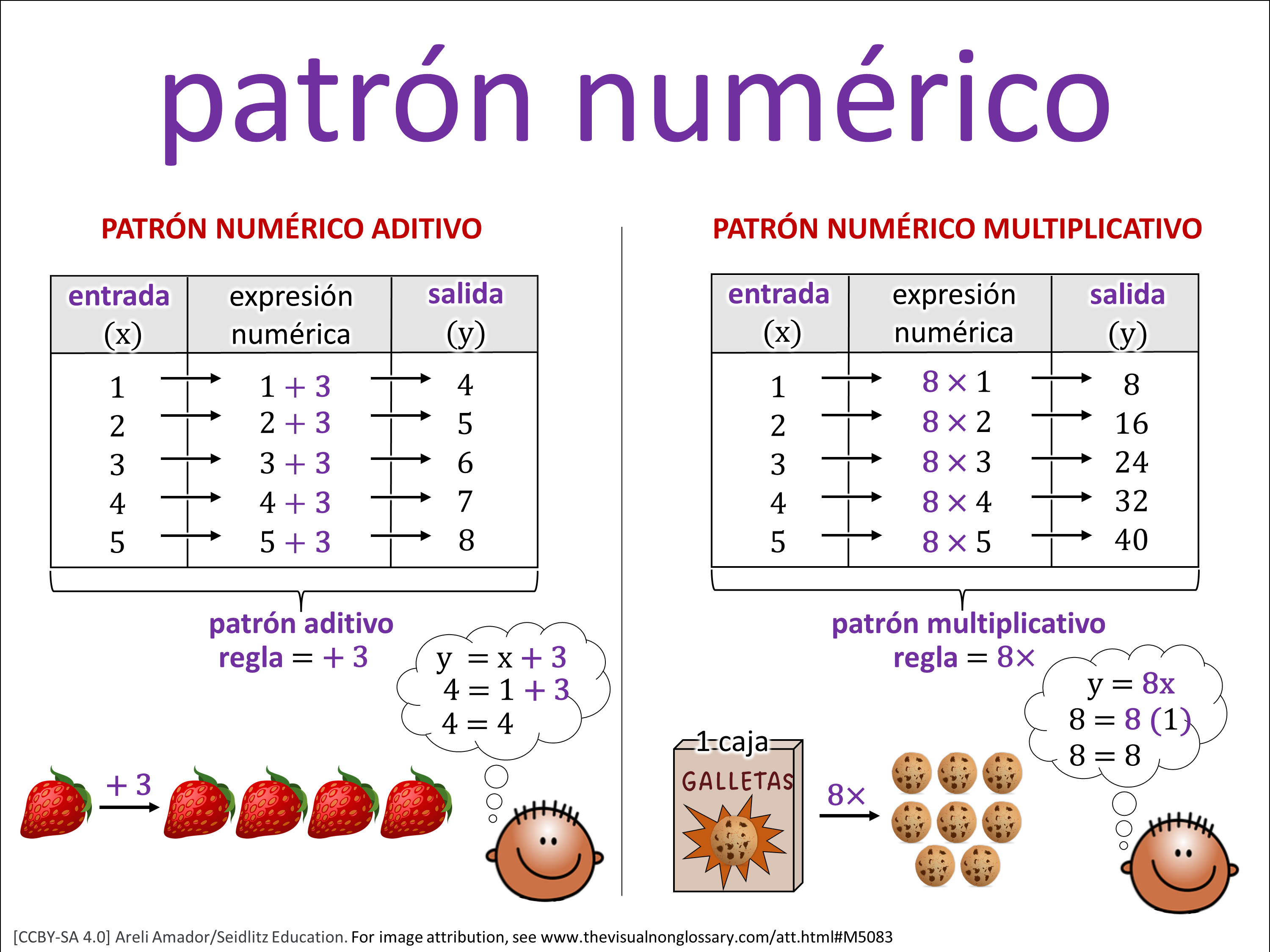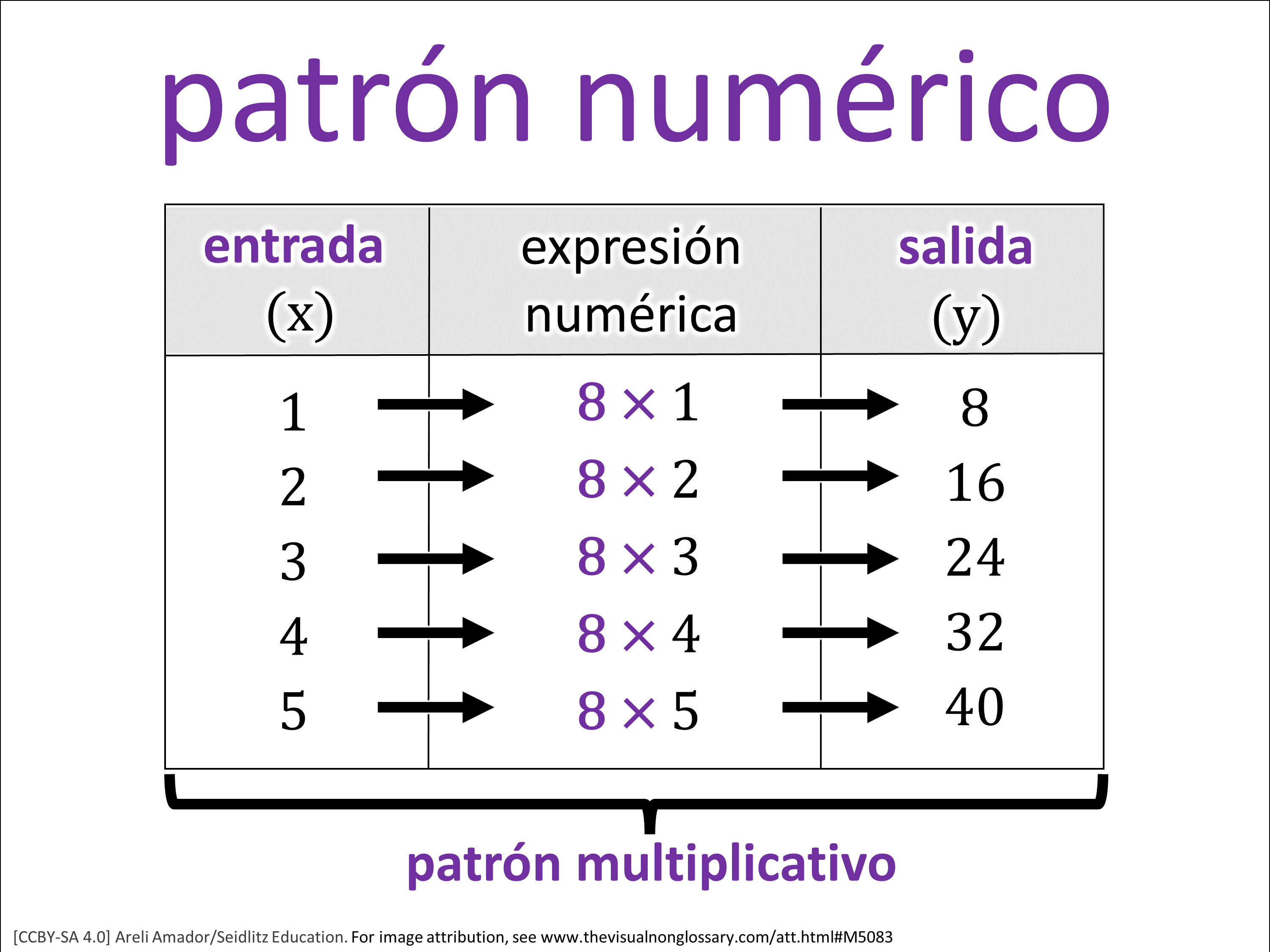patrón numérico: 5to Grado 🌐 View in English
Algebra
Linear Equations
Vertical Alignment
TEKS:
| 4th | 4.5(B) |
| 5th | 5.4(C), 5.4(D) |
Downloads
- Visual
- Word wall visual
- Lesson Plan
- Lesson Materials
Structured Conversation Questions
Observational
¿Qué es un patrón numérico?
Un patrón numérico es...Relational
¿Cómo se relaciona un patrón numérico con una tabla de entrada-salida?
Un patrón numérico está relacionado con una tabla de entrada-salida porque...Inferential
¿Cómo nos ayudan los patrones numéricos a comprender la relación entre las coordenadas x e y en un plano de coordenadas?
Los patrones numéricos nos ayudan a comprender la relación entre las coordenadas x e y en un plano de coordenadas por...
Please log in to comment.
Students might notice in this visual:
- Los números en el patrón aditivo aumentan de 3 en 3.
- El patrón multiplicativo tiene números más grandes.
- La regla de cada patrón está escrita arriba de la tabla.
- Las etiquetas de entrada y salida ayudan a organizar los números.
- Ambos patrones siguen un cambio constante.
EXTENDING THE DISCUSSION
After the observational question, randomly call on one or more students to share what they or their partner answered. Then ask the class, “Did anyone notice…?” using the suggestions above or anything else you’ve noticed.
After the observational question, randomly call on one or more students to share what they or their partner answered. Then ask the class, “Did anyone notice…?” using the suggestions above or anything else you’ve noticed.
Students might wonder:
- ¿Por qué el patrón aditivo aumenta más lento que el patrón multiplicativo?
- ¿Qué pasaría si el número de entrada fuera 10?
- ¿Puede un patrón ser aditivo y multiplicativo al mismo tiempo?
- ¿Cómo se verían estos patrones en una gráfica?
- ¿Qué otras reglas podrían hacer un patrón diferente?
EXTENDING THE DISCUSSION
After students have shared what they notice, ask the class, “Did anyone wonder…?” using the suggestions above or anything else you might think is interesting or relevant to the lesson.
After students have shared what they notice, ask the class, “Did anyone wonder…?” using the suggestions above or anything else you might think is interesting or relevant to the lesson.
Example student responses
To the observational question, ¿Qué es un patrón numérico?
LOW-LEVEL
Un patrón numérico es un conjunto de números que sigue una regla.
HIGH-LEVEL
Un patrón numérico es un cambio repetido en los números basado en una regla, y nos ayuda a predecir números futuros y ver relaciones en matemáticas.
RESPONDING TO RESPONSES
Emphasize and celebrate each student’s use of the key vocabulary to support a culture of “no wrong answers.”
Emphasize and celebrate each student’s use of the key vocabulary to support a culture of “no wrong answers.”



